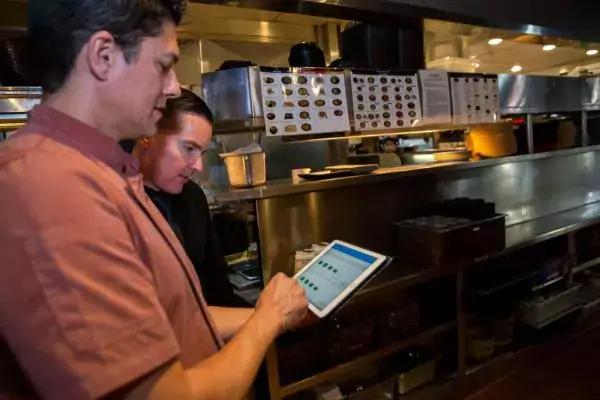This is Part 2 of a 3-Part series about what convenience store, restaurant, and retail operators should start thinking about when planning for the New Year. Read Part 1, Incorporating Mobile Devices Into Your Operations, and stay tuned for Part 3 coming in the next couple of weeks! Going paperless is a topic that has been discussed in the tech world at length over the past few years. For every employee who wants to go digital, there’s another who prefers having physical paper or the less literal paper of email and spreadsheets. However, the argument for adhering to paper only goes so far in today’s business environment. With the convenience store and QSR business being inherently mobile, store managers and associates in the field can get lost in the paper shuffle. Perhaps you’ve decided that 2018 is your big year of transition for your network of stores. Before you pull the plug on emails and spreadsheets, though, you need to consider the specific ways a paperless system will directly impact your business. If you’re making the switch just to save a few thousand dollars in paper, ink and man hours, it’s most likely trivial to your bottom line. It’s important to realize that a paperless system is worthless if you can’t gain actionable insights from your processes. Furthermore, a paperless system should not be implemented as a “cure-all” to underlying inefficiencies in your organization. These inefficiencies may include:
- Lack of a uniform reporting system that collects and organizes data
- Lack of ability to quickly take action when retail exceptions are detected
- Ongoing maintenance problems that are neither reported, nor addressed
- Lack of executive or managerial oversight in the form of audits
- Lack of employee accountability
How can senior managers address inefficiencies while moving to a paperless operation? Begin By Re-Evaluating Your Processes Consider how paper forms are currently being used in the day-to-day management of your business. For instance, if you use surveys or checklists, are you asking the right questions and going beyond “yes” or “no” answers? It’s important to recognize the limitations of the paperless system in comparison to the digital system. For instance, consider the example of a broken kitchen appliance that’s uncovered through a routine store audit. With the paper system, the employee might check off “no” for the operational question and scribble some notes. They might have to return to their vehicle or office to send an email or call in the problem, initiating the chain of command. Eventually, this task is assigned to the right staff member, who might have to make a follow-up phone call to clarify the notes. Eventually, the appliance is fixed, but it might take another audit to make sure that the task was in fact completed.  Now consider what this sequence of events might look like in a paperless process using a mobile technology like Zenput. On his or her smartphone, the auditor checks off “no” for the operational question, which sets off an immediate notification to a senior-level manager. This manager has customized the platform to “ping” anytime there’s faulty kitchen equipment in a store. There’s even an accompanying photo of the appliance with typed notes to clearly identify the issue. The task is assigned to the appropriate staff member who later uses Zenput to confirm that they completed the task. From the auditor who discovered the problem, to the senior manager who was notified, to the employee who is assigned to fix it―in this paperless process, everyone is communicating on the same platform with transparency and accountability. Select the Right Platform Choose mobile software that allows you to easily create forms to collect information. The same forms must be used across the organization, so that data analysis is accurate. Zenput’s platform provides GPS and timestamp to improve reporting accuracy. It also has helpful tools like photo/video sharing, Signature fields, and Location & User Profiles. Perhaps most importantly, it’s a cloud-based solution that enables managers to track results in real time. When a change is made to an audit, it’s updated in real-time across the network. Interested to learn how c-store and restaurant operators are using Zenput’s mobile technology to gain insights into their stores? Learn more here.
Now consider what this sequence of events might look like in a paperless process using a mobile technology like Zenput. On his or her smartphone, the auditor checks off “no” for the operational question, which sets off an immediate notification to a senior-level manager. This manager has customized the platform to “ping” anytime there’s faulty kitchen equipment in a store. There’s even an accompanying photo of the appliance with typed notes to clearly identify the issue. The task is assigned to the appropriate staff member who later uses Zenput to confirm that they completed the task. From the auditor who discovered the problem, to the senior manager who was notified, to the employee who is assigned to fix it―in this paperless process, everyone is communicating on the same platform with transparency and accountability. Select the Right Platform Choose mobile software that allows you to easily create forms to collect information. The same forms must be used across the organization, so that data analysis is accurate. Zenput’s platform provides GPS and timestamp to improve reporting accuracy. It also has helpful tools like photo/video sharing, Signature fields, and Location & User Profiles. Perhaps most importantly, it’s a cloud-based solution that enables managers to track results in real time. When a change is made to an audit, it’s updated in real-time across the network. Interested to learn how c-store and restaurant operators are using Zenput’s mobile technology to gain insights into their stores? Learn more here.
Subscribe to our blog
You are now subscribed!


